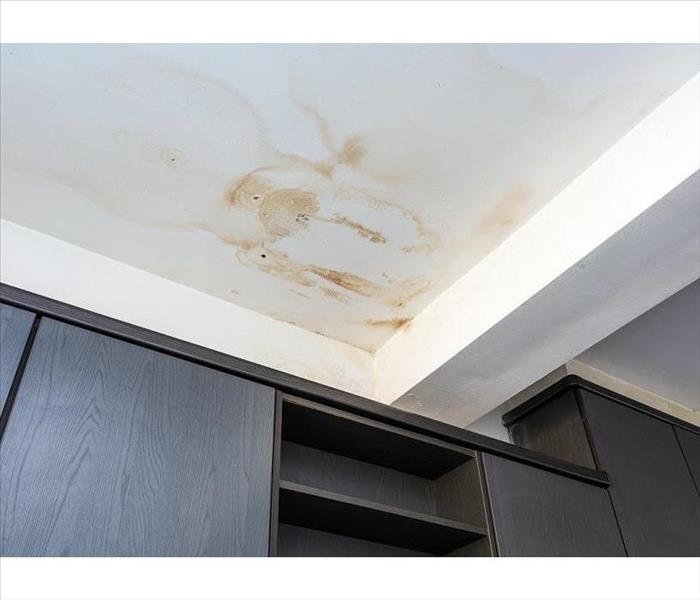How to Identify the Root of a Mysterious Ceiling Leak | SERVPRO® of Western Dutchess County
5/11/2020 (Permalink)
 If you're starting to notice stains and markings on your ceilings, call us asap and our experts will get that water damage remedied quickly!
If you're starting to notice stains and markings on your ceilings, call us asap and our experts will get that water damage remedied quickly!
If you have noticed wet spots, discoloration, sagging or buckling on your ceiling or at the top of your walls in your Dutchess County home or business, you may be wondering how to determine exactly where this water is coming from.
Unlike a burst pipe or clear appliance leak, ceiling leaks can be more difficult to diagnose and treat for homeowners as there are many elements that are obscured by the home’s finishes. To help you diagnose the problem, we have included some handy indicators regarding the two common types of ceiling leaks:
How to Identify a Roofing System Ceiling Leak
If you have a ceiling leak in an area of your home that has an attic directly above it, it may be due to a roofing system issue. In most cases, a roof leak will be due to water being allowed to enter through a hole or other compromised area in the roof above. Roofing system leaks can generally be identified by:
- Leaking that occurs while it is raining or pops up shortly after a storm
- Dripping water that is off-colored or murky looking, as it may have picked up debris as it traveled from the roof
- If the leak is correlated with a buildup of ice along the eaves of your home (referred to as ice dams) it may be due to the ice partially melting and seeping into the roof
- Attic insulation that is wet, soggy or has evidence of mold and mildew, which is a sign that it is absorbing some of the water from the leak
- Musty smells or signs of mold around the area above the leak in the attic
How to Identify a Ceiling Leak That Is Due to Plumbing
If the ceiling leak is located in an area where plumbing pipes or fixtures run above it, there may be evidence that it is a plumbing-related problem instead. This is common in rooms located below bathrooms, kitchens or laundry rooms, which are an indicator that the leak is due to supply pipes or drain pipes located within the ceiling. These can be identified by:
- Dripping water that is clear, if it is from a supply line in the ceiling
- Steady leakage that occurs every time you utilize something that might be routed to the plumbing pipes above, or leakage that occurs slowly but regularly, which could indicate a supply pipe issue
Regardless of what type of ceiling leak you have, it is always recommended that you begin the restoration process as quickly as possible to mitigate any further damages.





 24/7 Emergency Service
24/7 Emergency Service